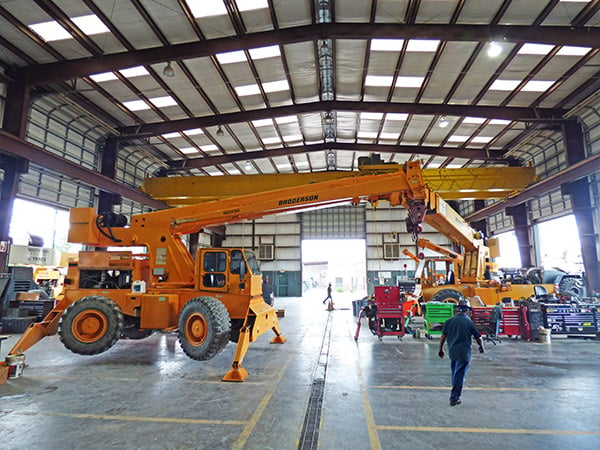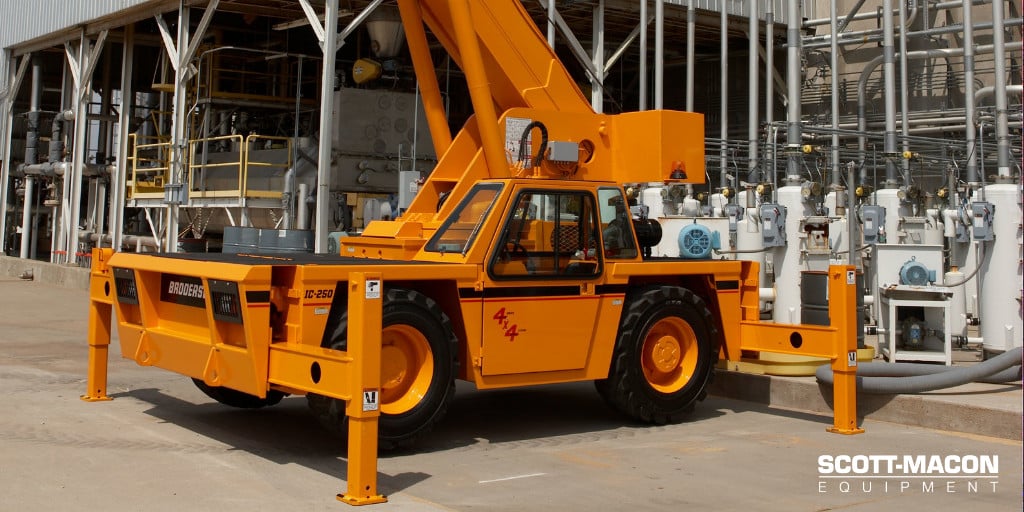However, the fact is that crane safety isn't simple. Recent accidents direct attention to the importance of proper and safe operation.
What Really Causes Accidents? OSHA Crane Accident Statistics
OSHA has estimated that 93 percent of all crane accidents are due to human error. Think about that. In other words, equipment failures do happen, but in the vast majority of accidents, the fault wasn't inherent in the equipment. The fault was in the improper use of that equipment. These include accidents caused by improper operation, improper rigging, and failure to follow established procedures. So it's easy to see that extreme caution and vigilance are required for all aspects of crane operation.
- Nearly 45 percent of crane-related accidents are caused by contact with power sources such as power-carrying lines.
- The second most common cause of crane accidents is falls, either overturns of the equipment itself or of the load being lifted.
- Finally, 10 percent of crane accidents involve poor communication.
Electrical Hazards and Other Obstacles
The route to the work site is a risk area often overlooked. Professionals should check the route before use, note obstacles and maintain proper minimum clearance from any power lines or sources. Dedicated observers during both crane movement and crane operation should make sure proper clearance is maintained.
If possible, power lines along the route should be de-energized. The same concerns apply to any power lines or sources near the work area itself. Always follow all OSHA guidelines strictly.
Falls and Overturns
Falls and overturns are another common cause of crane accidents. Frequent root causes are exceeding load guidelines, improper loading or high wind conditions.
To prevent these crane accidents, never exceed the maximum load capacity guidelines for the configuration of the lift. Proper load placement is vital. Properly center all loads and place slings so that the load is secure. If necessary, use taglines to control swing and rotation of the load.
At the job site, check ground conditions, especially for saturated soil or ground that is freezing or thawing. Use skidding if required to spread out ground loads for extension of outriggers. Check the loading chart to determine maximum crane load capacity. Secure the area beneath and around the lift by taping it off.
High Wind
Wind can also factor greatly in crane accidents and operation. Maximum wind speeds permittable vary due to crane type and configuration, but low wind speeds for lifts are always desirable. Monitor weather conditions constantly for unexpected changes. Unexpected gusts of wind have been known to topple cranes or cause falls.
Cease operations immediately if inclement weather of any type is expected or noticed anywhere in the vicinity. All team members should follow proper procedures at all times of operation and for any crane assembly or disassembly.
Proactivity, Teamwork and Communication
Poor communication can cause crane accidents. To prevent this, check equipment daily and brief all members of the lift team on their parts of the job.
Remember, safety is about following established procedures and constantly checking the environment for any possible hazards. This is important in all modes, including crane assembly or disassembly. Following proper procedures can and will save lives. It's the fundamentals that are vitally important. Every situation is different, but established procedures and guidelines help find the common denominators of risk and the safety measures that alleviate them.
Finally, complacency is the enemy of safety. Every aspect of every job should be examined for possible hazards.
Crane Safety in Operations Checklist.jpg?width=472&name=twitter%205%20(2).jpg)
To sum up, there are no shortcuts to safety. What can you do to improve crane safety in your operation? These proactive practices will improve your safety program and record:
- Create a job plan for all work.
- Use the right crane for the job.
- Make sure your workforce is educated, trained and licensed if required on the specific crane (and all other equipment) you use.
- Follow maximum load capacity guidelines for the crane configuration you use.
- Make a daily safety meeting a priority. This outlines daily expected work, identifies and assesses hazards, gets everyone on the same page and reinforces the priority of safety.
- Do all daily checks of equipment as required.
- Follow all applicable procedures for equipment operation.
- Check the route to the work site for proper clearance and possible hazards.
- Make sure ground conditions are acceptable and outriggers are properly set up.
- Use good communication and teamwork at all times.
- Make sure loads are centered, slings are in good condition, and load weight is below the acceptable maximum.
- Tape off the area so you can lift safely without endangering bystanders.
- Use a signal to communicate to everyone in the area prior to each lift.
- Remain constantly vigilant for possible hazards.
- Use proper lockout and tagout procedures for any equipment that's out of service for repair.
These are some good general guidelines to help make crane operation in the workplace safer. Knowing the specifications, operating characteristics and procedures for your particular crane is essential.
Each model and make of crane is different. Choosing the right crane for the job is vitally important. So is keeping all cranes and other equipment maintained and operating properly.
How We Partner With You for Crane Safety
At Scott-Macon Equipment, we take safety seriously. We can help find the right crane for your particular needs and keep your lifting equipment in top shape with regular maintenance.
Our service staff is available 24/7, if needed, for emergency repairs and service. At Scott-Macon Equipment, when service matters, we're there. Contact us to learn more.

.jpg)

-1.jpg)








Comment